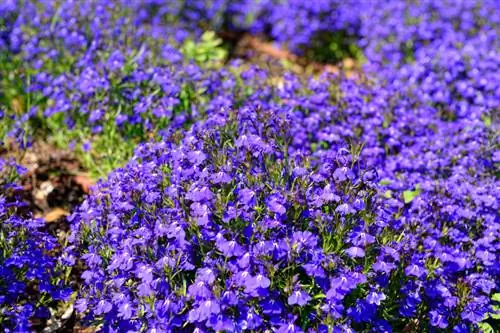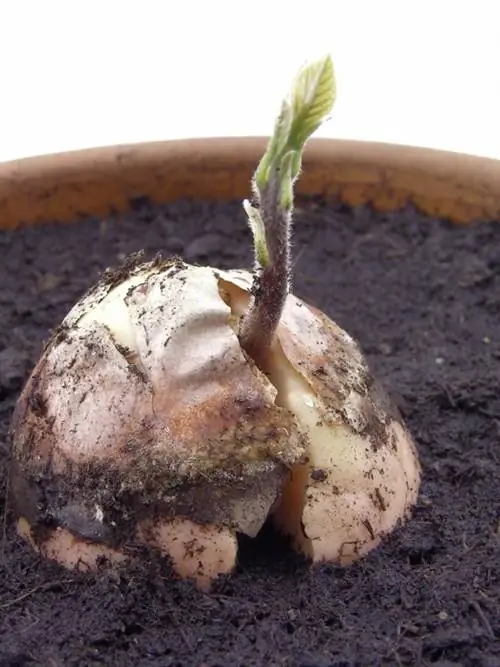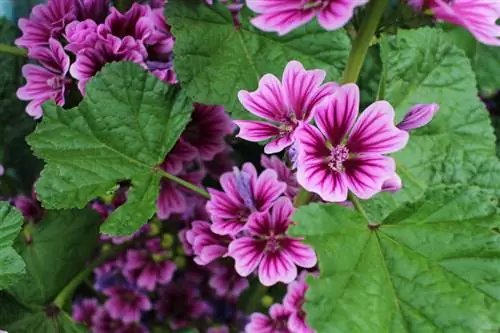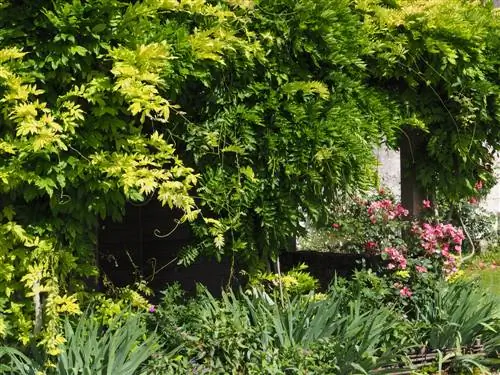- Author admin [email protected].
- Public 2023-12-16 16:46.
- Last modified 2025-01-23 11:20.
Lobelias are considered to require moderate care. Although they require little care, they resent mistakes in care and respond to this, among other things, with a declining flower bloom and susceptibility to disease. So: How do you do it right?
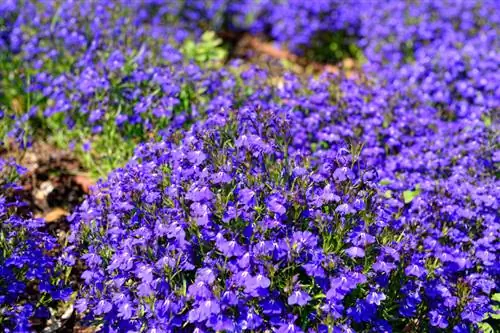
How do you properly care for lobelia?
Lobelia care includes regular watering when the soil layer is dry, fertilizing every 1-2 weeks with liquid fertilizer or horn meal, no pruning necessary, but removing spent flowers. Annual lobelias are not hardy, perennials overwinter at 5-10°C.
How important is watering?
The greatest attention should be paid to the water balance of these flowers. They have a high water requirement and are greedy for cool water, especially during their heyday in summer. Water is primarily important for lush flowering.
If the plants are too dry, you can tell by wilted, dried leaves, for example. Always water when the top layer of soil has dried - ideally in the morning and, if necessary, a second time in the afternoon on hot days. But be careful that there is no waterlogging. This causes the lobelias discomfort.
What role does fertilization play?
Fertilizing is also crucial for abundant flowering.
- Lobelias in pots: fertilize every 1 to 2 weeks
- Dosing liquid fertilizer correctly
- significant nutrients: nitrogen and phosphorus
- It is best to add fertilizer to the irrigation water
- fertilize from March and until August
- Use horn meal as an alternative to liquid fertilizer
Can pruning be avoided?
Lobelias do not need pruning. Only the withered flowers should be removed towards the end of July. A hand hedge trimmer (€24.00 on Amazon) can be used for this purpose. Otherwise, these old flowers only mean unnecessary ballast for this plant. After cutting, new shoots emerge, which will soon bloom until autumn.
Should you overwinter the lobelia?
Unfortunately, the lobelia is only an annual in this country. The reason: It is not winter hardy. Even overwintering is not worth it for most species. Therefore, the lobelias should be torn out and composted in October. You can buy new copies next year.
Those species that are perennial can be overwintered. They should be cut down in autumn and placed in a cool place of 5 to 10 °C. They also need to be watered lightly in winter. Perennial lobelias can be put outside again from May.
Tip
If your lobelia has spotty leaves, there is probably a disease behind it. Bacterial infections can be recognized by angular spots, whereas fungal diseases leave rounded spots.

